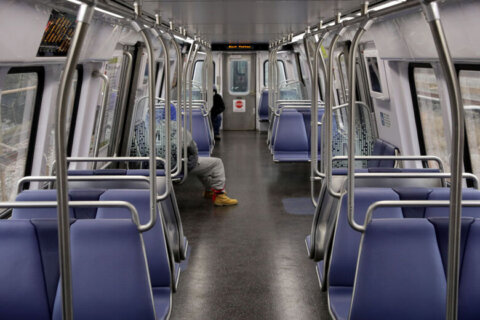WASHINGTON — After Metro injury rates ticked up last year for riders and workers, a federal safety expert called it “disturbing” that Metro did not seem to be making more progress.
“I’m wondering if we’re actually measuring the right things to determine safety on Washington Metro, because we have many unsafe acts that don’t result in injuries,” said Robert Lauby, Federal Railroad Administration chief safety officer, at Thursday’s Metro Board meeting.
Lauby, who is also a Metro Board member, cited issues that Metro should also include in its annual safety report in addition to injury rates:
- Close calls
- Trains running red signals
- Collisions in yards
- Crowding when riders are offloaded from trains onto already-packed platforms at rush hour
- 11 derailments across the rail system in 2016 (nine work vehicles, one train in a rail yard and one train at East Falls Church that exposed major inspection problems)
“The injuries are the part of the iceberg that’s above the water,” Lauby said.
He did, however, note improvements in some areas.
“I get the question all the time: ‘Is safety getting better on Washington Metro?’ And I say, ‘Yeah, I think it is,’” Lauby said.
Among notable changes is tracking more injuries tied to MetroAccess paratransit service, said Pat Lavin, Metro chief safety officer.
“There were a number of incidents where an individual might have been transported to the hospital, was only observed and released — they didn’t count that as an incident,” Lavin said.
“From a reporting standpoint, it is reportable, so we went back, we looked at these incidents, and that drove the number of incidents much higher than they were originally reporting.”
In addition to improved oversight for drivers, Lavin said, Metro is working on improved training for properly securing riders in wheelchairs in the paratransit vehicles.
On the rail system, Lavin said his highest priorities out of remaining National Transportation Safety Board recommendations are those tied to fire-life safety.
Major improvements to the ventilation fan systems would require significant investment. But in the interim, Metro is supposed to be working on a plan for how to use the existing systems during any emergencies.







